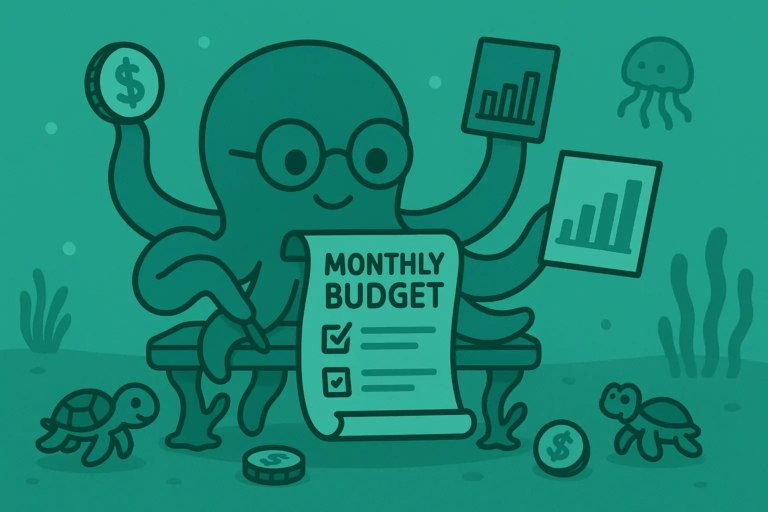10 ChatGPT Prompts for GitHub Users
GitHub is more than just where your code lives — it’s where your work gets seen, shared, and used.
These ChatGPT prompts help you write better READMEs, cleaner issues, smarter commits, and more polished repos overall.
Whether you’re solo-building or contributing to open source, these will save you time and make your GitHub presence stand out.
1. Prompts to Write a Clear README
#CONTEXT:
You built something great — now you want others to understand and use it.
#GOAL:
Create a complete, clear README.
#RESPONSE GUIDELINES:
• Project name: [insert]
• What it does: [insert one-liner]
• Key features: [insert list]
• Include install steps, usage, and example
• Format in Markdown
#OUTPUT:
A clean README that shows what your repo does and how to use it.2. Prompts to Write Better Commit Messages
#CONTEXT:
Your commits are too vague — and you want to write messages that are easy to track later.
#GOAL:
Write clear, useful commit messages.
#RESPONSE GUIDELINES:
• What changed: [insert description]
• Type of change: [fix, add, refactor, docs, etc.]
• Suggest 2–3 options
• Use action verbs
• Keep it short
#OUTPUT:
Commit messages that actually make sense.ChatGPT Output
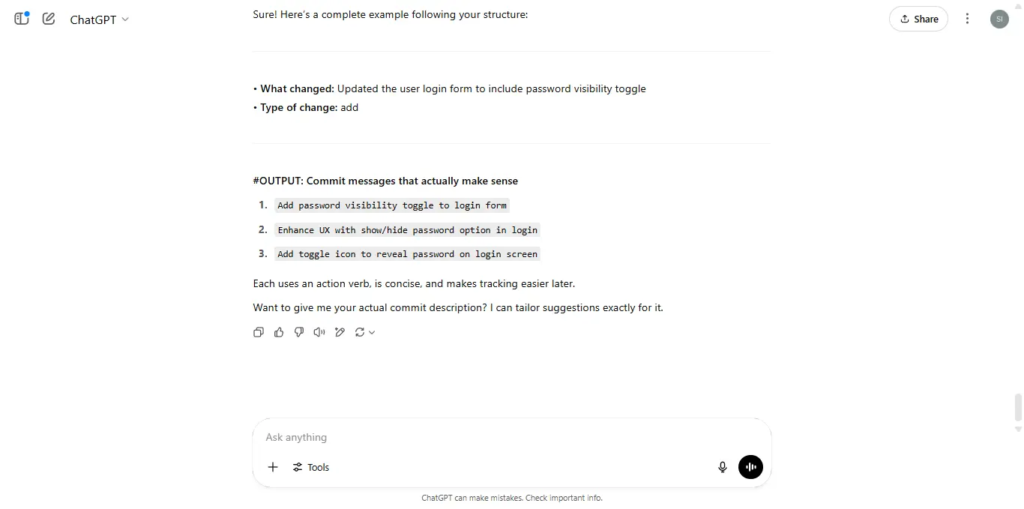
3. Prompts to Draft a Pull Request Description
#CONTEXT:
You’ve opened a PR — now you need a description that explains what and why.
#GOAL:
Write a pull request message that helps reviewers.
#RESPONSE GUIDELINES:
• What changed: [insert summary]
• Why it matters: [insert reason]
• Add checklist if needed
• Keep it brief and useful
#OUTPUT:
A polished PR description ready to submit.4. Prompts to Explain Code in Plain English
#CONTEXT:
You have a function or file — but it needs clear comments or explanation.
#GOAL:
Break down what the code does and why it matters.
#RESPONSE GUIDELINES:
• Paste the code
• Ask for simple explanation with comments
• Optional: add 1–2 use cases or examples
• Keep it beginner-friendly
#OUTPUT:
Readable code comments or summary for docs or teammates.ChatGPT Output
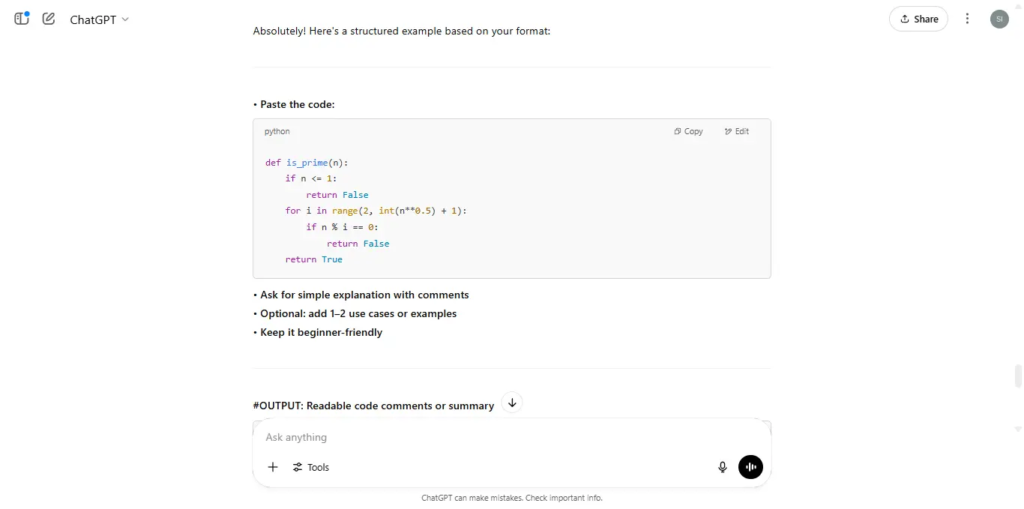
5. Prompts to Write an Issue Template
#CONTEXT:
You want people to submit bugs or features properly.
#GOAL:
Create a simple, structured issue template.
#RESPONSE GUIDELINES:
• Issue types: [bug, feature, question, etc.]
• Ask for title, description, steps to reproduce, expected result
• Format in Markdown
• Keep it short and structured
#OUTPUT:
An issue template I can drop into .github/ISSUE_TEMPLATE.md.6. Prompts to Generate a .gitignore File
#CONTEXT:
You want to avoid committing the wrong files.
#GOAL:
Create a .gitignore file for my setup.
#RESPONSE GUIDELINES:
• Language/framework: [insert: Python, Node, etc.]
• Tools used: [insert: VS Code, macOS, etc.]
• Ask for clean formatting
• Optional:remove unnecessary entries
#OUTPUT:
A complete .gitignore file that keeps the repo clean.ChatGPT Output
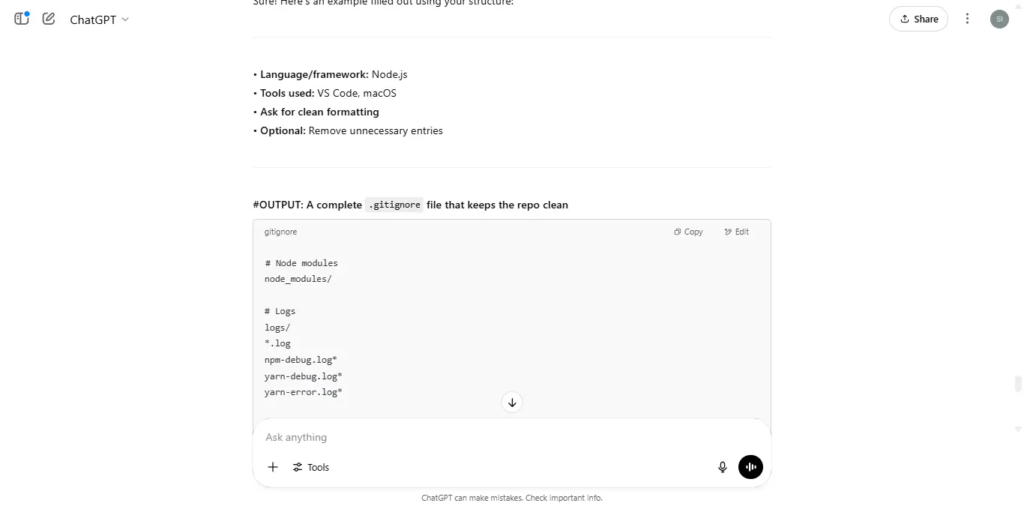
7. Prompts to Auto-Document API Functions
#CONTEXT:
You have working code — now you want fast API docs.
#GOAL:
Generate docstrings and function descriptions.
#RESPONSE GUIDELINES:
• Paste the code
• Ask for proper Python docstrings or JS JSDoc
• Include input/output details
• Optional: add usage examples
#OUTPUT:
Copy-paste-ready documentation for your public functions.8. Prompts to Summarize a Repo for Your GitHub Profile
#CONTEXT:
You want a clean summary of your project that fits in your GitHub profile or pinned repos.
#GOAL:
Write a short, sharp description.
#RESPONSE GUIDELINES:
• Project name: [insert]
• What it does: [insert in 1 line]
• Why it exists or helps
• Limit to 1 paragraph
• Optional: include 3 quick bullet points
#OUTPUT:
A polished summary I can drop into my GitHub bio or repo sidebar.ChatGPT Output
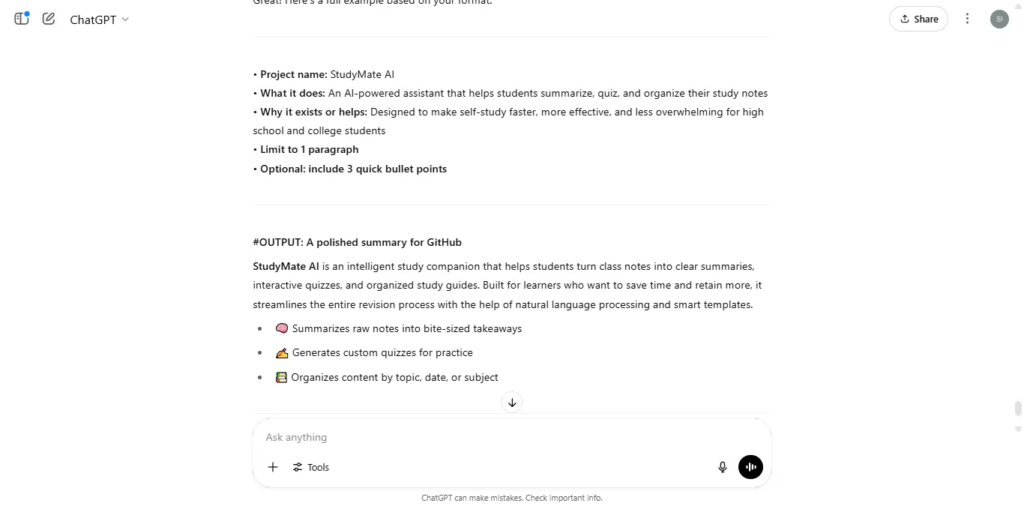
9. Prompts to Plan Tasks in a GitHub Project Board
#CONTEXT:
You’re organizing an issue board or roadmap — and want to break it down into tasks.
#GOAL:
List out tasks with labels and priorities.
#RESPONSE GUIDELINES:
• Project goal: [insert summary]
• Suggest 5–10 issues with titles + descriptions
• Tag: [bug, enhancement, docs, etc.]
• Keep each task short and actionable
#OUTPUT:
A list I can turn into GitHub issues or Kanban cards.10. Prompts to Onboard New Contributors
#CONTEXT:
You want people to contribute to your repo — and not get confused.
#GOAL:
Write a simple CONTRIBUTING.md file.
#RESPONSE GUIDELINES:
• Project type: [insert]
• Setup steps: [insert tools or install steps]
• How to run locally, submit PRs, follow code style
• Optional: add links to open issues or labels
#OUTPUT:
An easy-to-follow contributor guide for first-timers.ChatGPT Output
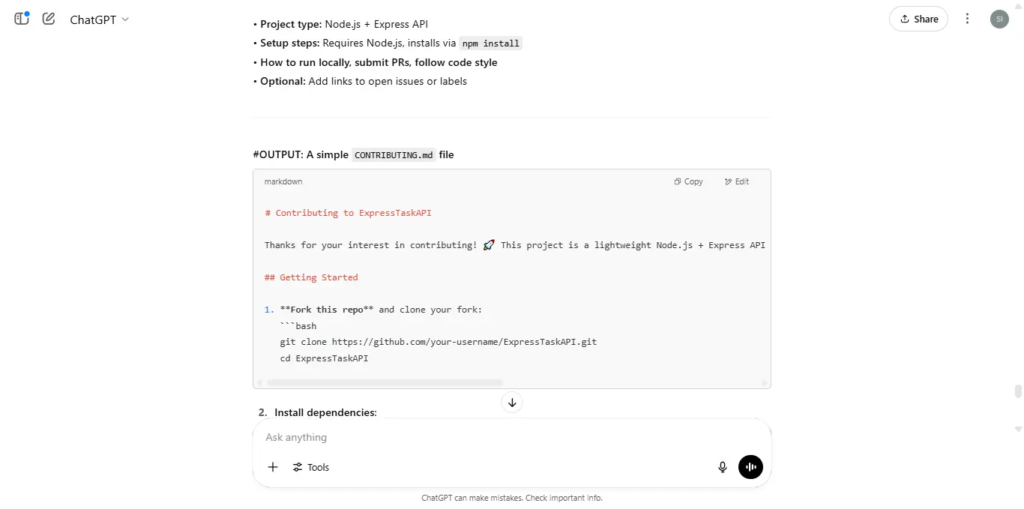
How to Use These Prompts Effectively
• Use them across your workflow
Docs, issues, PRs, profiles — it’s all connected. Let ChatGPT cover the admin.
• Feed it real context
Paste your actual code, repo links, and project goals for better results.
• Ask for edits
Say “shorter,” “friendlier,” or “more technical” — and rework on the fly.
• Stack prompts together
Start with a README, then build an issue template, PR guidelines, and docs in one go.
• Keep it human
Even if AI helps, you’re still the owner — always read before you post.
Wrap-Up
A good GitHub repo isn’t just clean code — it’s clear communication.
These ChatGPT prompts help you create polished projects, stay organized, and show up like a pro. Use them to save time, cut through the busywork, and let your code speak loud and clear.




